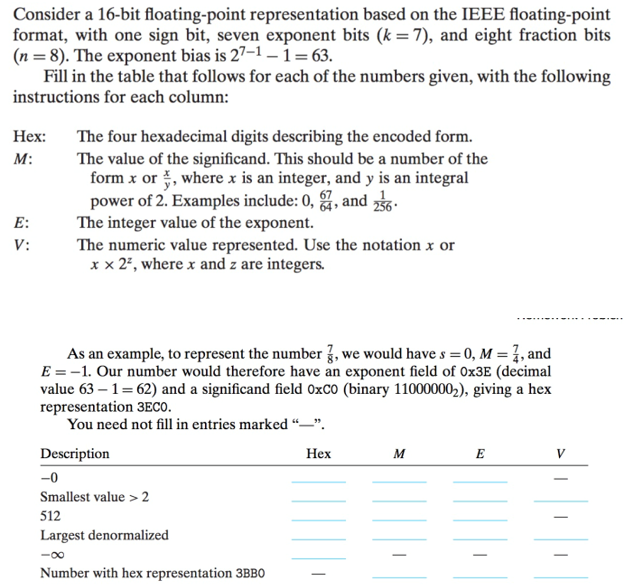Home /
Expert Answers /
Computer Science /
consider-a-16-bit-floating-point-representation-based-on-the-ieee-floating-point-format-with-one-pa357
(Solved): Consider a 16-bit floating-point representation based on the IEEE floating-point format, with one ...
Consider a 16-bit floating-point representation based on the IEEE floating-point format, with one sign bit, seven exponent bits \( (k=7) \), and eight fraction bits \( (n=8) \). The exponent bias is \( 2^{7-1}-1=63 \). Fill in the table that follows for each of the numbers given, with the following instructions for each column: Hex: The four hexadecimal digits describing the encoded form. M: The value of the significand. This should be a number of the form \( x \) or \( \frac{x}{y} \), where \( x \) is an integer, and \( y \) is an integral power of 2 . Examples include: \( 0, \frac{67}{64} \), and \( \frac{1}{256} \). \( E \) : The integer value of the exponent. \( V \) : The numeric value represented. Use the notation \( x \) or \( x \times 2^{z} \), where \( x \) and \( z \) are integers. As an example, to represent the number \( \frac{7}{8} \), we would have \( s=0, M=\frac{7}{4} \), and \( E=-1 \). Our number would therefore have an exponent field of \( 0 \times 3 \mathrm{E} \) (decimal value \( 63-1=62 \) ) and a significand field \( 0 \times \mathrm{CO} \) (binary \( 11000000_{2} \) ), giving a hex representation \( 3 \mathrm{ECO} \). You need not fill in entries marked "-".
